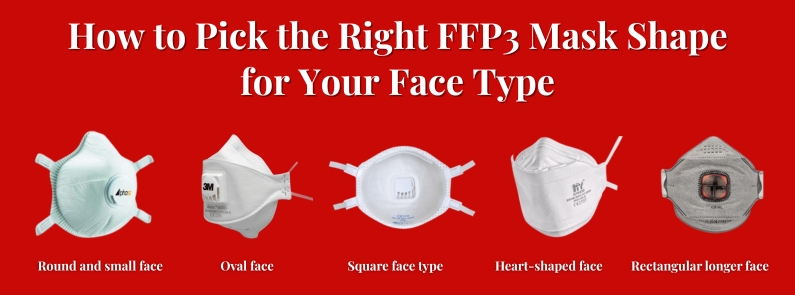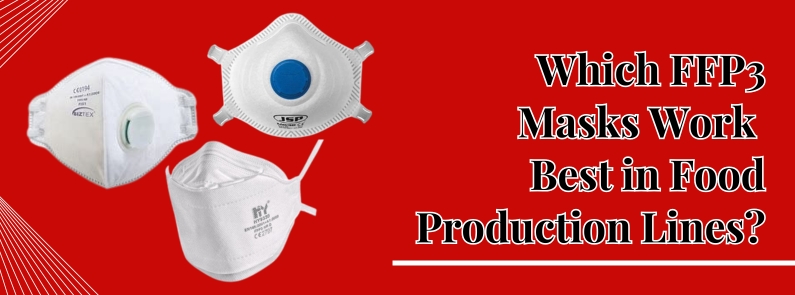
One kind of personal protective equipment (PPE) that guards against inhaling harmful compounds in the air at work is respiratory protective equipment (RPE). Hazardous particles contaminate workspaces in four different forms: solid particulates, liquid particulates, gases, and vapours. Aerosols and dust particles are the most harmful to workers as they are invisible in the air.
That's why a powered respirator can help clean the air and remove all toxic particles. However, to ensure high-quality protection, it is essential to ensure that your powered air respirator meets some regulatory compliance set by the organization. Let's learn more about the safety standards of half-face and full-face respirators.
Safety Standards For Respiratory Protection in Europe
EN 149 is one of the primary safety standards for respiratory protection. Half masks are filtered to provide particle protection. Half mask respiratory equipment marketed in the UK and Europe has to adhere to this European safety standard.
Disposable respirators like the FFP2 and FFP3 are covered under the EN 149 European Standard on Testing and Marking Requirements of Masks that Filter the Air. These masks frequently have an inhalation or exhalation valve and cover the lips, chin, and nose. The filtering facepiece is represented by the initials FFP, and their filtering efficiency is indicated by the number (1/2/3). These disposable filter respirators offer protection against aerosols, droplets, and dust particles that may be inhaled.
Half-face respirators are an additional option to FFP2 and FFP3 respirators. These are reusable and are simple to take apart, clean, maintain, and use again for an endless amount of time. Although not endless, the replacement filters have a significantly longer lifespan than single-use, throwaway respirators.
An additional choice is a powered air purifying respirator (PAPR). This battery-operated, portable respirator uses a breathing tube to deliver clean, filtered air to the wearer while filtering the air in the surrounding area. The wearer is then prevented from breathing in anything unfiltered by the creation of pressure inside the headgear.
Other Safety Standards for Respiratory Protection
Besides EN-149, there are other safety standards for respiratory protection, each for specific equipment. So, whenever you buy a particular piece of equipment, look for the respective safety standard.
- EN 405 - This standard is for valved filtering half-face mask respirators for gases and particulates.
- EN 140 - This one is for half-face mask pieces and quarter-masks.
- EN 136 - This standard is for full-face respirators.
- EN 137 - This is for self-contained open-circuit compressed air breathing apparatus.
- EN 138 - This standard is for respiratory protective devices.
- EN 143 - This one is for particulate filters.
- EN 146 - This is specifically for hoods and helmets of powered respirators.
- EN 147 - This is a combined safety standard for full-face, half-face, and quarter masks for powered respirators.
- EN 371 - This one is for gas and combined filters that are used against low boiling points of organic compounds.
- EN 14387 - This standard is for gas and vapour filters.
- EN 12841 - This standard applies to powered filtering devices inside respiratory protective devices such as helmets or hoods.
Classification Of Half-Mask Filters For Particle Protection
According to DIN EN 149:2001 and A1:2009, half-masks that filter particles and masks with replaceable filters are divided into several respiratory protection classes. Depending on the degree of pollution, each class can be applied in a variety of settings:
- FFP1 - FFP1 respirators can filter at least 80% of the air and up to four times the corresponding occupational exposure limit (OEL). These masks are appropriate for non-fibrogenic and non-toxic particles.
- FFP2 - FFP2 respirators are appropriate for toxic or health-harming smoke, particles, and dust. They can be used up to ten times the corresponding occupational exposure limit (OEL) and filter at least 94% of particles.
- FFP3 - Filtering efficiency-wise, FFP3 masks are the best protection class, with a minimum of 99%. They are effective at filtering harmful dust, particulates, and smoke up to 30 times the corresponding occupational exposure limit (OEL).
Tips to Buy an Air Respirator Like FFP3 Face Mask or Powered Air Respirator
Here are considerations that one should keep in mind before investing in personal protective equipment:
1. Go Through Medical Evaluations to Understand Your RPE Needs.
A successful Respiratory Protection Programme must include a medical evaluation to evaluate whether an individual is capable of using a particular respirator. This is crucial because it helps prevent diseases, injuries, and, in rare circumstances, death from the physiological burden that using a respirator causes.
2. Conduct a Fit Testing Procedure to Find the Perfect Face Mask.
For top-notch protection, respirators must fit correctly. Contaminated air will be sucked into the facepiece and inhaled by the employee if a tight seal is not kept between the facepiece and their face. Fit testing is a fundamental component of our respirator program that aims to shield the worker from breathing in contaminated ambient air.
3. Learn About the Maintenance and Care Procedures.
Establishing and implementing appropriate maintenance and care protocols and schedules is essential to provide ongoing protection from respiratory protective equipment. A careless approach to upkeep and care will make a device ineffective for its intended purpose. If it isn't kept in working order, the device won't provide the expected protection.
4. Get Proper Training to Wear the Respirator Mask.
Even the most comprehensive respiratory protection equipment will not work if workers don't wear or use respirators correctly. Training is the only method to guarantee that our staff members understand the significance of wearing respirators and how to do so. Staff training is crucial for proper respirator use and is a significant component of the respiratory protection program.
The Bottom Line
Respiratory Protective Equipment (RPE) shields the wearer from airborne contaminants and particulates that could be harmful to their health. When all other reasonably practical control techniques have been exhausted, RPE should be utilized as a last option.
There are various kinds of protective equipment (RPE), and choosing the best one for a given activity should be determined by a risk assessment, taking into consideration factors like wearer requirements and task duration.
Respirator Shop is your ultimate destination for the best and most compliant personal protective equipment (PPE) at cost-effective rates. Visit today and buy the full-face respirators that meet the required safety standards.




